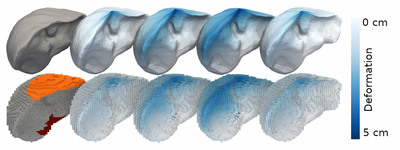Surgical Oncology
The NCT sites in Dresden and Heidelberg work towards the individualization of surgical treatments in terms of precision oncology. One joint key mission is the establishment of the field of surgical data science, aimed at improving the quality of interventional healthcare and its value through the capture, organization, analysis and modeling of all available data from the treatment process chain. A strategic priority is therefore to develop the future infrastructure, tools and workflow concepts for enabling data-driven surgical oncology and multidisciplinary data science. Both NCT sites play a leading role in the International Surgical Data Science initiative (www.surgical-data-science.org), launched to further increase the visibility of the NCT sites as leading institutes in the field of surgical data science.
Research profile Dresden
One focus is the development and evaluation of computer- and robotic-assisted systems that leverage the context-adapted usability of available information from the entire surgical treatment process chain. This comprises surgical workflow analysis, soft-tissue navigation, intraoperative visualization, surgical training and surgical data science. Clinical evaluation and further development of robotic-assisted surgery is performed in visceral, urological and gynecological surgery. In oncological neurosurgery, research focuses on image-guided resection using functional, hyperspectral imaging. Research opportunities are greatly enhanced within the NCT preclinical experimental operational room (OR).
Artificial intelligence-assisted soft-tissue surgery
One research focus is the real-time analysis of intraoperative sensors for context-aware assistance. To enable soft tissue navigation where the position of tumors is predicted inside an organ, a novel method to learn soft tissue deformation was presented by combining deep learning and simulation approaches. The result is a data-driven deformation model which is applicable for real-time simulations, achieving similar accuracies as state-of-the-art systems while performing significantly faster. This method is currently used in interdisciplinary cooperation projects with the goal to develop and establish user-centred real-time intraoperative guidance systems e.g. for complex oncological liver surgery.
Pfeiffer et al., Int J CARS 2019; Bodenstedt et al., Int J CARS 2019



